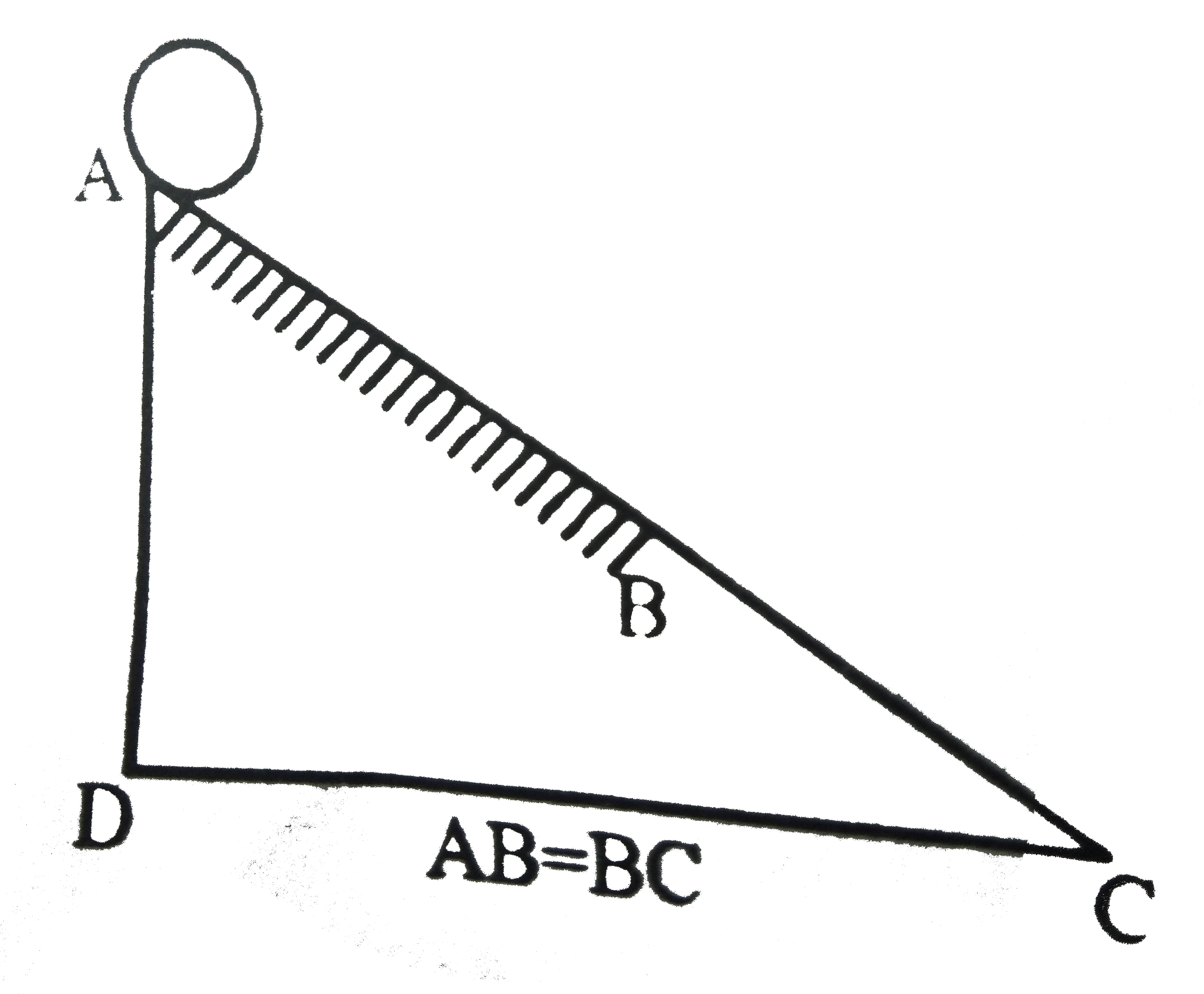A ring is rolling without slipping. The ratio of translational kinetic energy to rotational kinetic energy is
v1 = v2 (γ2)12
v1 = v2 (γ3)13
v1 = v2 (γ)12
v1 = v2 (γ2)13
To find the ratio of translational kinetic energy to rotational kinetic energy for a ring rolling without slipping, we can follow these steps:
Step 1: Understand the definitions
- Translational Kinetic Energy (TKE) is given by the formula:
TKE=12mv2
where m is the mass of the ring and v is the translational velocity of the center of mass of the ring.
- Rotational Kinetic Energy (RKE) is given by the formula:
RKE=12Iω2
where I is the moment of inertia of the ring and ω is the angular velocity.
Step 2: Determine the moment of inertia for a ring
The moment of inertia I for a ring about its central axis is given by:
I=mr2
where r is the radius of the ring.
Step 3: Relate translational and rotational motion
For a ring rolling without slipping, the relationship between translational velocity v and angular velocity ω is:
v=ωr
From this, we can express ω in terms of v:
ω=vr
Step 4: Substitute ω into the RKE formula
Now substitute ω into the rotational kinetic energy formula:
RKE=12Iω2=12(mr2)(vr)2
This simplifies to:
RKE=12(mr2)(v2r2)=12mv2
Step 5: Calculate the ratio of TKE to RKE
Now we can find the ratio of translational kinetic energy to rotational kinetic energy:
Ratio=TKERKE=12mv212mv2=1
Conclusion
Thus, the ratio of translational kinetic energy to rotational kinetic energy for a ring rolling without slipping is:
Ratio=1:1
- Translational Kinetic Energy (TKE) is given by the formula:
TKE=12mv2
where m is the mass of the ring and v is the translational velocity of the center of mass of the ring.
RKE=12Iω2
where I is the moment of inertia of the ring and ω is the angular velocity.
The moment of inertia I for a ring about its central axis is given by:
I=mr2
where r is the radius of the ring.
For a ring rolling without slipping, the relationship between translational velocity v and angular velocity ω is:
v=ωr
From this, we can express ω in terms of v:
ω=vr
Now substitute ω into the rotational kinetic energy formula:
RKE=12Iω2=12(mr2)(vr)2
This simplifies to:
RKE=12(mr2)(v2r2)=12mv2
Now we can find the ratio of translational kinetic energy to rotational kinetic energy:
Ratio=TKERKE=12mv212mv2=1
Thus, the ratio of translational kinetic energy to rotational kinetic energy for a ring rolling without slipping is:
Ratio=1:1
Topper's Solved these Questions
Similar Questions
A disc is rolling without slipping. The ratio of its rotational kinetic energy and translational kinetic energy would be -
View SolutionA hollow sphere is rolling without slipping on a rough surface. The ratio of translational kinetic energy to rotational kinetic energy is
View SolutionThe moment of inertia of a solid cylinder about its axis is given by (1/2)MR2. If this cylinder rolls without slipping the ratio of its rotational kinetic energy to its translational kinetic energy is -
View SolutionThe radius of a wheel is R and its radius of gyration about its axis passing through its center and perpendicualr to its plane is K. If the wheel is roling without slipping. Then the ratio of tis rotational kinetic energy to its translational kinetic energy is
View SolutionPortion AB of the wedge shown in figure is rough and BC is smooth. A solid cylinder rolld without slipping from A to B. Find the ratio of translational kinetic energy to rotational kinetic energy, when the cylinder reaches point C.
 .
.
View SolutionWhen a sphere rolls without slipping the ratio of its kinetic energy of translation to its total kinetic energy is.
View SolutionWhen a solid cylinder rolls without slipping the ratio of kinetic energy of translation to its total kinetic energy is
View SolutionA circular disc rolls down an inclined plane . The ratio of rotational kinetic energy to total kinetic energy is
View SolutionA disc is rolling on a surface without slipping. What is the ratio of its translational to rotational kinetic energies ?
View SolutionA ring is rolling without slipping. Its energy of translation is E. Its total kinetic energy will be :-
View Solution
